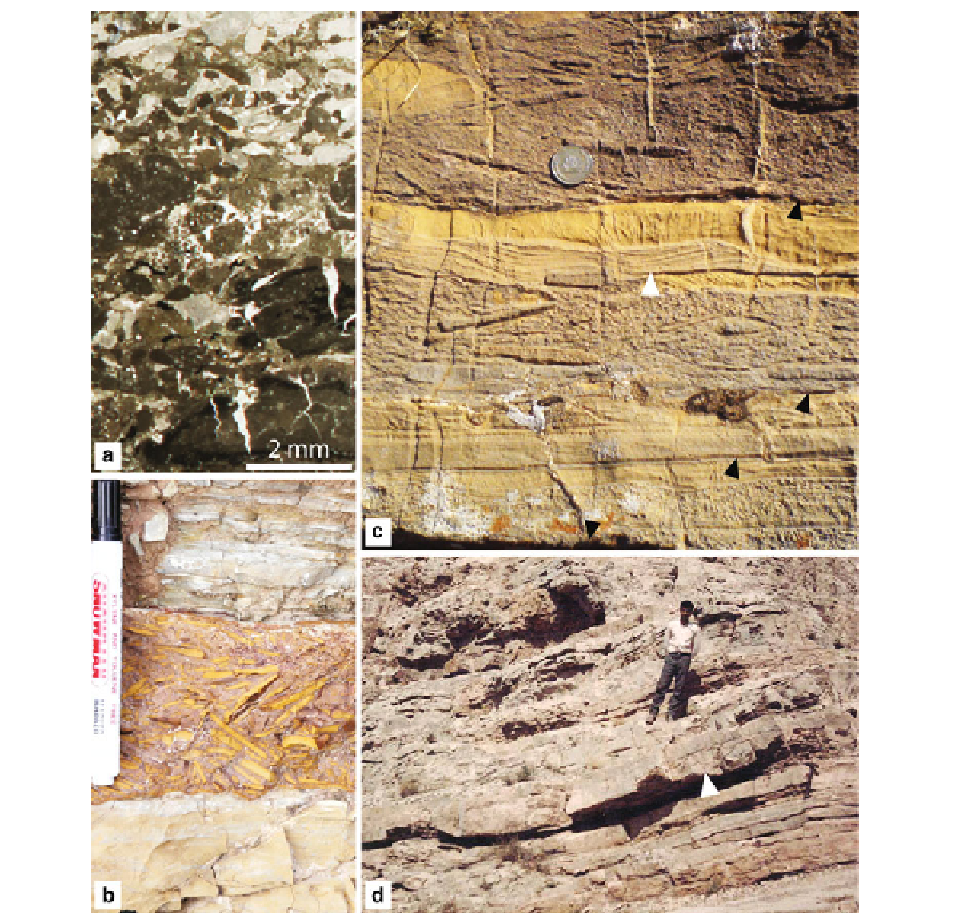Geology Reference
In-Depth Information
Fig. 21.4
Tidal fl at storm deposits: (
a
) Photomicrograph of a
thin section showing graded tidal fl at storm bed composed of
intraclasts (mainly mud-cracked stromatolite fragments), peloids
and mixed fauna (the majority of the light grains are echinoderm
debris); Cave Hill Member of the Mississippian Kinkaid
Formation, Buncombe Quarry, southern Illinois. (
b
) Field pho-
tograph of a tidal fl at succession intercalated by an erosive-based
intraclast grainstone storm bed. The storm bed consists of yel-
low tidal fl at dolomudstone; Lower Triassic lower member of
the Elika Formation, central Alborz Mountains, northern Iran
(magic marker is 14.5 cm long). (
c
) Stacked fi ning-upward
erosive-based storm beds (
black arrows
at the basal erosional
contacts) with intraclasts of subtidal/intertidal facies and hum-
mocky cross-stratifi cation (
white arrow
) (
coin
diameter is
2.5 cm). (
d
)
Reddish brown
very thin-bedded and laminated
intertidal deposit intercalated by several erosive based intraclas-
tic storm layers. Note the large gutter cast (
arrow
) that has cut
through the underlying intertidal facies (above the hammer in
the
lower right
) (Photo courtesy of Dr. M. Ghomashi, Sistan-
Baluchistan University, Zahedan, Iran); Lower Triassic lower
member of the Elika Formation, Bibishahrbano Mountain,
northern Iran
stromatolite (Figs.
21.3c
,
21.6f
and
21.9d
) (see the
Triassic tidalites in Sect.
21.7.5
for an example). The
lower intertidal environment adjacent to a hypersaline
subtidal setting may comprise domal stromatolite struc-
ture (Fig.
21.9a-c
) changing to wavy and planar stro-
matolite in a landward direction (see the Precambrian
and Middle Cambrian tidalites in Sects.
21.7.1
and
21.7.2
, respectively). Other features common in arid

